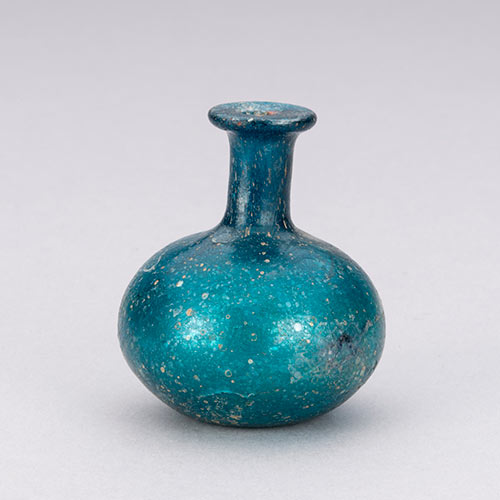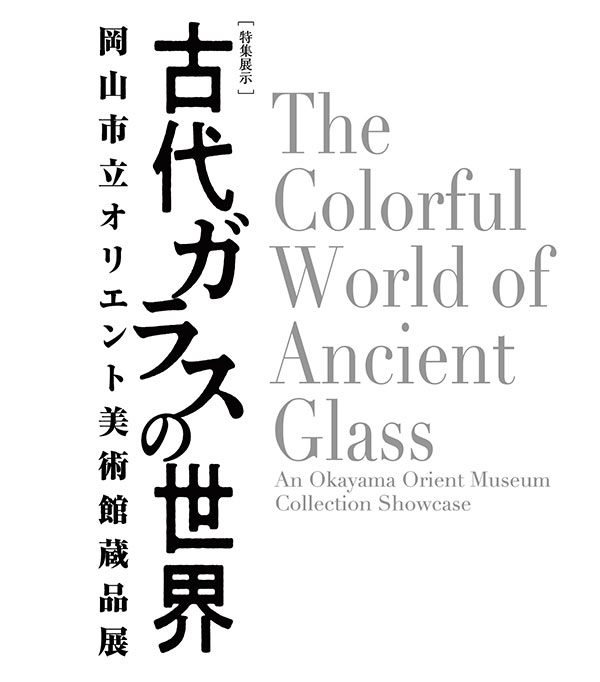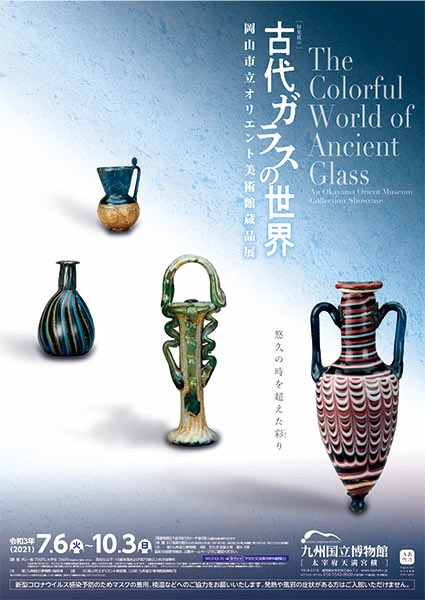Feature Exhibition:
The Colorful World of Ancient Glass
An Okayama Orient Museum Collection Showcase
Exhibition period:
6 July 2021 (Tue) – 3 October 2021 (Sun)
Venue:
Cultural Exchange Exhibition Hall, Rooms 8 and 9
Introduction:
Glass is a ubiquitous presence in our lives, versatile in its practical and decorative functions. It forms our windows, cups, the screens of our mobile phones, and even the glazes that cover our ceramic bowls. Despite its irreplaceable role in our lives, glass, in its transparency, is often overlooked in our environment. It was, however, not always transparent in appearance. In this exhibition, we trace the history of glass, from its beginnings in West Asia, to subsequent developments in glassmaking techniques, forms, and even colors.
This exhibition also serves as a showcase of the Okayama Orient Museum’s collection of objects from the ancient West Asian and Egyptian region, which the museum has placed in our care while they undergo renovation. As you embark on this journey to explore the kaleidoscopic history of glass across four millennia with us, marvel at the skill of their makers, and reflect on the distance they made from West Asia to lands as far east as Japan. We hope that this exhibition will magnify your interest in both ancient West Asian and Egyptian cultures, as well as the rich history of cultural exchange that connected the world during this period.
Exhibition Overview and Highlights
Prologue: Through the Looking Glass
Before delving into the multicolored glass creations of the ancient world, let us first transport ourselves to the western end of the Asian continent, five thousand years in the past. We find ourselves in Mesopotamia, a region located between the Tigris and Euphrates Rivers where the world’s oldest civilizations were born. Meanwhile, to its west, the pharaohs of Egypt were consolidating power in northern Africa. People in these two regions interacted and traded frequently, and their rich cultures and beliefs, as well as the influences they received from one another, are reflected in their material culture. Some of these objects even made their way to Japan via the Silk Road. In opening this exhibition with a selection of non-glass objects, we hope to contextualize the development of glass by presenting an overview of material cultures in the ancient West Asian and Egyptian regions.
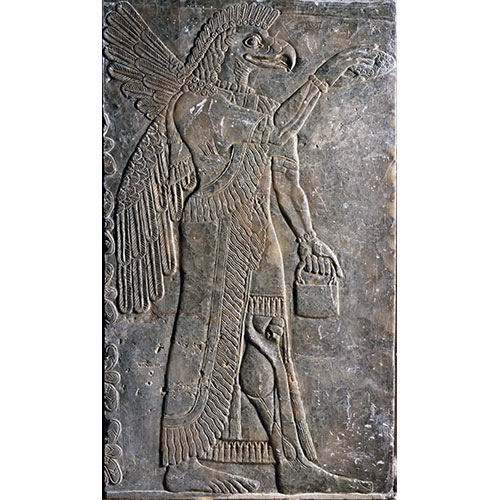
Relief depicting a winged guardian spirit with a vulture’s head
From Nimrud, Iraq
About 875–860 BCE; Neo-Assyrian period
Okayama Orient Museum
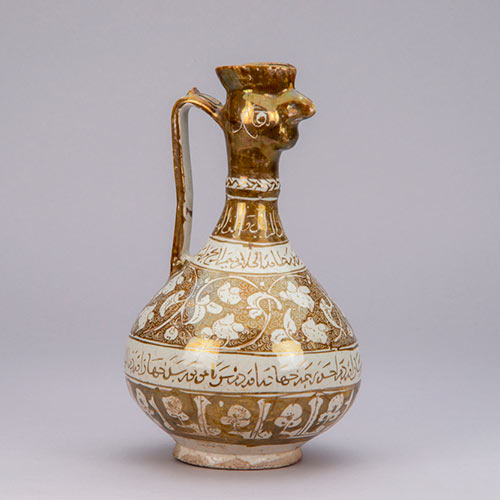
Lusterware ewer shaped like a bird
Central Iran
13th century; Il-Khanid dynasty
Okayama Orient Museum
Part 1: Before the Dawn of Glass
The people of ancient West Asia favored naturally occurring stones like lapis lazuli and marble for their beautiful colors and patterns. These prized stones were generally owned only by the powerful due to their rarity. Around the forty-fifth century BCE, the Mesopotamian region developed a kind of ceramic ware that took on a glass-like finish when fired. These products, most of which were light blue or green, were immensely popular in Egypt, and are known today as “Egyptian faience.” Glazes—coatings that turn into a glassy, waterproof layer when applied to ceramic and fired—were also in use at that time, but did not fuse well with the clay of the region. Their uses were thus limited to decorative wall tiles and small jars for holding precious liquids.
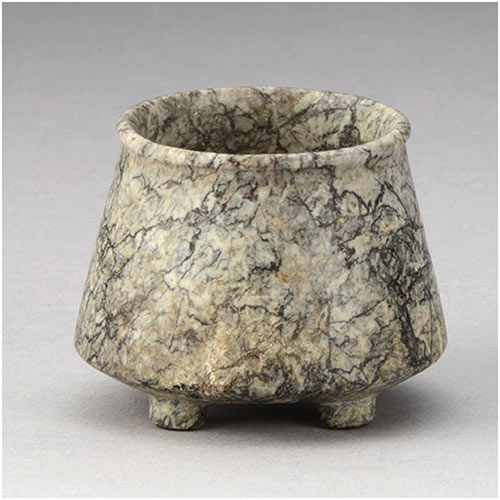
Stone vessel
From Tell Bouqras, Syria
About 64th–61st century BCE; Neolithic period
Okayama Orient Museum
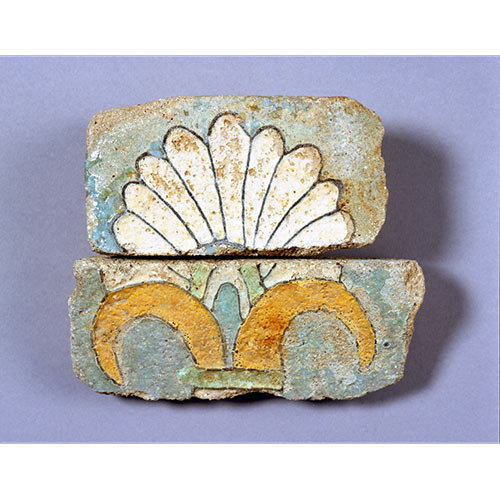
Glazed bricks (fragments)
From Susa, Iran
About 520–420 BCE; Achaemenid dynasty
Okayama Orient Museum
Part 2: Glass in the Early Days
Glass was first used as an independent material for making items around 2200 BCE. This first began in Mesopotamia, and later spread to neighboring cultures in Egypt and the rest of West Asia, including the Mediterranean region. These early glass products were treated as substitutes for precious stone ones, as their creators went to great lengths to mimic the vibrant color of turquoise and intricate patterns on natural marble. Around the same time, people had also managed to make vessels out of glass, but this required such technical sophistication that it took extreme effort to create even the smallest ones.
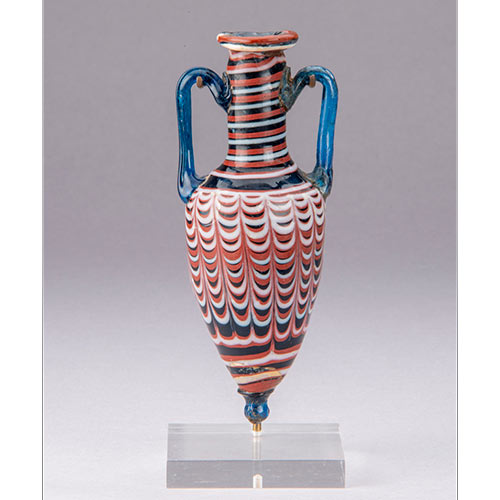
Amphoriskos (small jar)
Eastern Mediterranean region
2nd–1st century BCE; Hellenistic period
Okayama Orient Museum
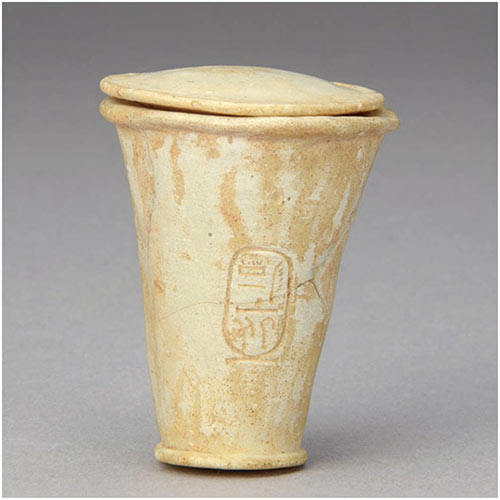
Lidded vessel inscribed with the name of Amenhotep III
Egypt
About 1390–1352 BCE; 18th dynasty, New Kingdom
Okayama Orient Museum
Part 3: The Evolution of Glass Production
The Mediterranean region was the main production center of glass around the late first millennium BCE. Its artisans experimented on designs and techniques to create regional variants that catered to consumer demands. What had begun as an industry for the imitation of natural stone later reached its peak during the two centuries from the second century BCE up to the Hellenistic period, when its products took on imaginative designs not found in the natural world. These included gradients, detailed mosaics, and even face-shaped forms, all of which were made possible by the creators’ skillful manipulation of the unique properties of glass.
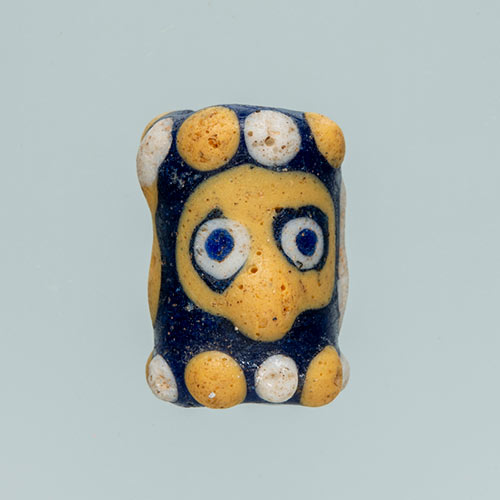
Core-formed cylindrical bead decorated with a human-like face
Eastern Mediterranean or coastal Black Sea region
1st century BCE–1st century CE; Roman period
Okayama Orient Museum
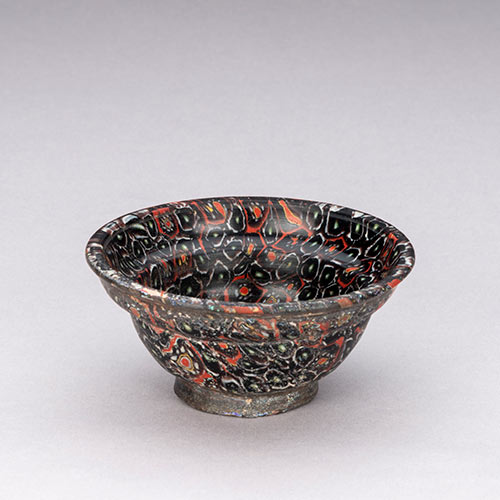
Mosaic glass cup
Eastern Mediterranean region
1st century BCE–1st century CE; Hellenistic to Roman period
Okayama Orient Museum
Part 4: The Advent of Glassblowing
Around the first century BCE, a glass workshop in a nameless corner of the eastern Mediterranean region invented a technique that would change the history of glassmaking forever: glassblowing. This technique involves sticking a small piece of molten glass to one end of a blowpipe and blowing into the other end to inflate the glass. This allowed for new innovations in creating both vessels and decorative glass ornaments, changing the way people made and viewed glass. Products ranged from daily objects to luxury items, and eventually became commodities traded all over the world following the rise of the Roman Empire. The technique of glassblowing has remained almost unchanged since then, and is still in use today.
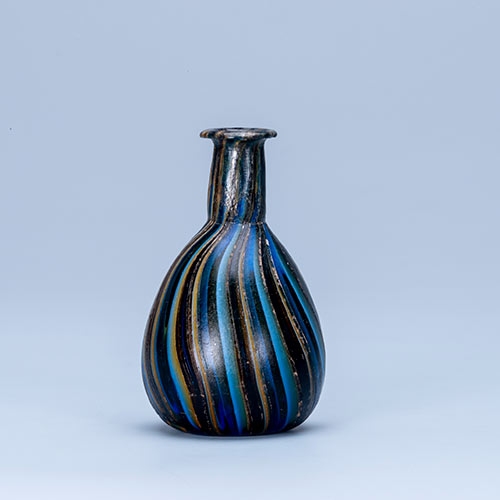
Marbled glass flask
Eastern Mediterranean region
1st century; Roman period
Okayama Orient Museum
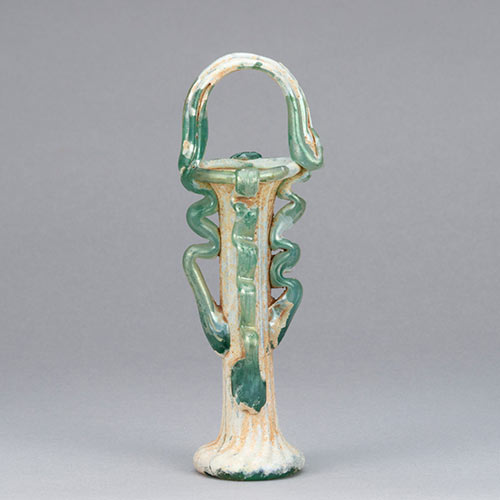
Mold-blown ribbed vessel with a handle
Eastern Mediterranean region
4th century; Roman period
Okayama Orient Museum
Part 5: The Growing World of Glass
The Sasanian Empire, which flourished in the third to sixth century in present-day Iran, is famous for their
cut glass products. Striking for how their distinct forms scatter light, Sasanian cut glass became precious
commodities that traveled the world via trade routes, including the Silk Road. Some of them even ended up in
lands as distant as Japan.
After the Islamic religion and culture took root in West Asia around the ninth century, glass production
split into two distinct trends: highly decorated objects of luxury, and simple forms created for everyday
use. As glassmakers refined methods for creating transparent glass, the industry experienced a boom. Luxury
glass articles developed into European glass crafts, while simpler everyday glass objects followed humanity
into modern day. We can thus see how Islamic glass products spread all over the world, and formed the basis
for modern-day glassmaking industries.
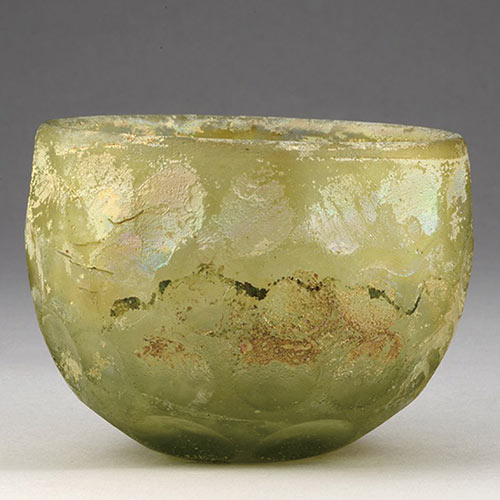
Bowl with round facet-cut decorations
Mesopotamia
5th–7th century; late Sasanian dynasty
Okayama Orient Museum
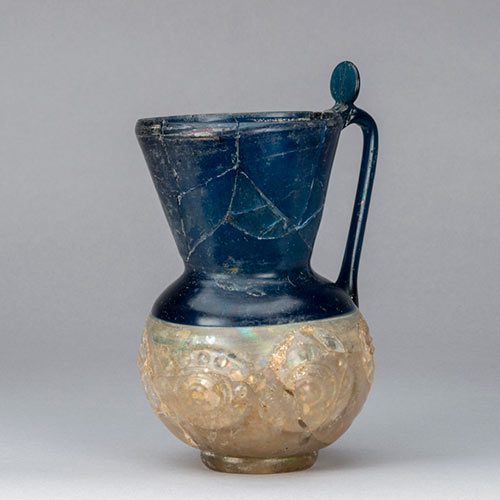
Jug decorated with rosette patterns
Iran
9th–10th century; early Islamic period
Okayama Orient Museum
Other Exhibit Highlights
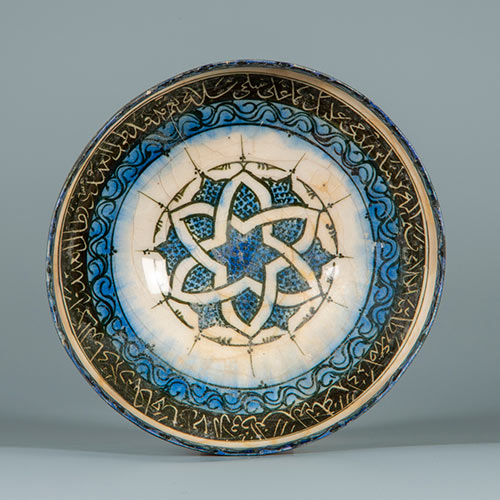
Stemmed bowl decorated in underglaze black
Iran
13th century; Seljuq to Il-Khanid dynasty
Okayama Orient Museum
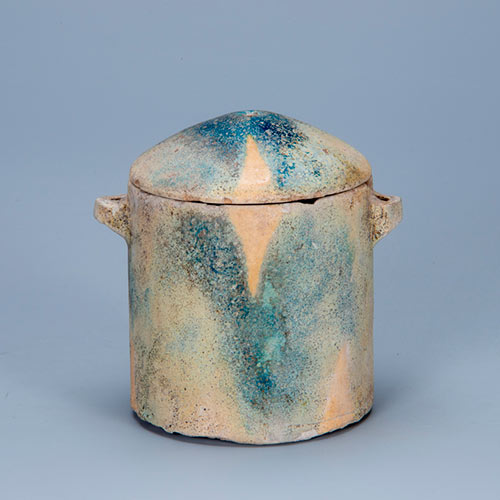
Lidded glazed cylindrical container
Northwestern Iran
8th–6th century BCE; Iron Age
Okayama Orient Museum
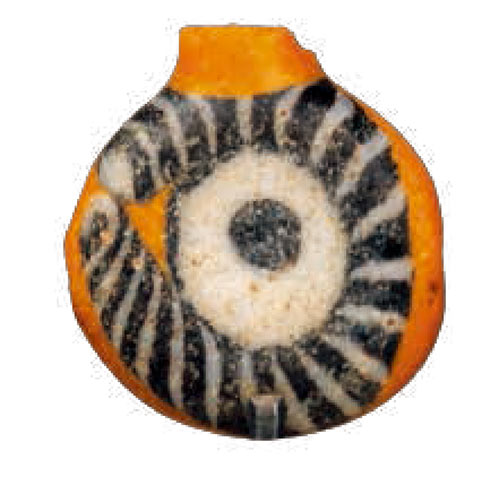
Eye bead
Egypt
About 1550–1295 BCE; 18th dynasty, New Kingdom
Okayama Orient Museum
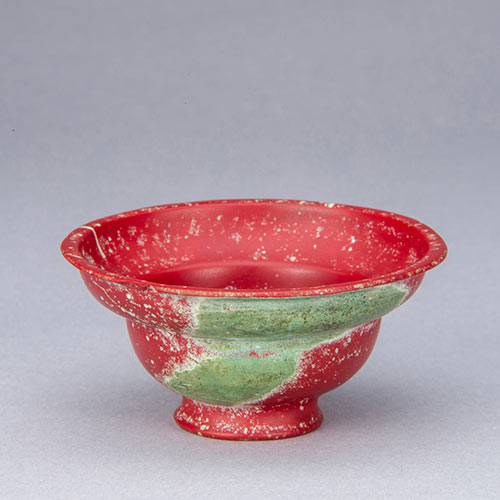
Patella cup
Eastern Mediterranean region
1st century BCE–1st century CE; Hellenistic to Roman period
Okayama Orient Museum
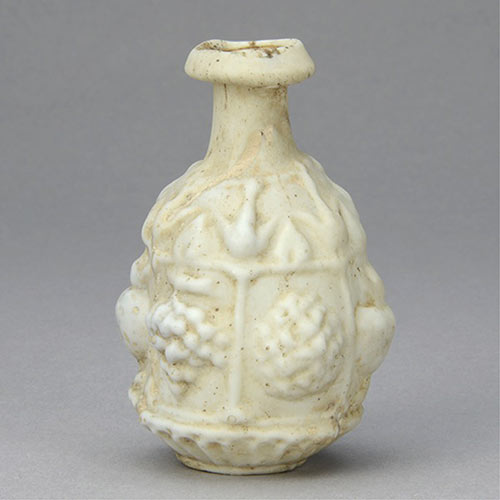
Flask with fruit decorations
Syria
1st century; Roman period
Okayama Orient Museum
